Y: The Last Man—The Show Must Go On
In all my years as a writer, I’ve come across only a handful of stories that cultivated a lasting influence on my creative identity. Y: The Last Man, the acclaimed comic series from Brian K. Vaughan and Pia Guerra, was a revelation that obliterated my preconceptions about the medium. Each issue had me looking like Hugh Jackman in The Fountain—mind blown, as the kids say. The concept was simple but infinitely complex with narrative possibilities: after a mysterious plague kills everything with a Y chromosome, Yorick Brown and his Capuchin monkey, Ampersand, are the last biological males on Earth. From the moment I read the words “all of the men are dead,” I knew Y was destined for the screen.
Hollywood has developed an aversion to taking (financial) risks with original material, preferring instead to scoop up every novel, comic, and videogame for adaptation. I followed the troubled development of a Y movie and television series for years, dumbstruck at how it never took off. Hell, I even wrote an essay in 2015 about why Hollywood needed Y. But with the rights changing hands and constant creative fluctuations, I feared it would never come to fruition. By the time a series entered production, I was understandably skeptical about what had survived the turmoil.
But upon watching the first episode, whatever doubts I harbored died with all the men.
Under the leadership of showrunner Eliza Clark, Y: The Last Man is everything I didn’t know I wanted and exactly what the show needed to be—an adaptation built upon a foundation of passion for the source material and elevated by an uncompromising vision.
The comic ran from 2002-2008. Since then there have been major strides in transgender visibility, rights, and acceptance. Gender identity wasn’t a prominent issue during the comic’s run but is now very much part of the modern sociopolitical conversation. While the plague in Y may have decimated all biological males, there are still many men in the world. What does that mean for the trans community? People who transitioned and have been living their best lives are suddenly thrust into the spotlight again. Their very existence invites the questions, the judgmental looks, and a slew of new challenges to their validity as men simply because they weren’t born with a Y chromosome. Trans issues weren’t nearly as prominent in the comic. If memory serves, Yorick more frequently comes upon women cross-dressing and gluing on beards to serve desires of straight women. But if ever there was a world that needed—nay, demanded—that trans characters be at the forefront, this is it.
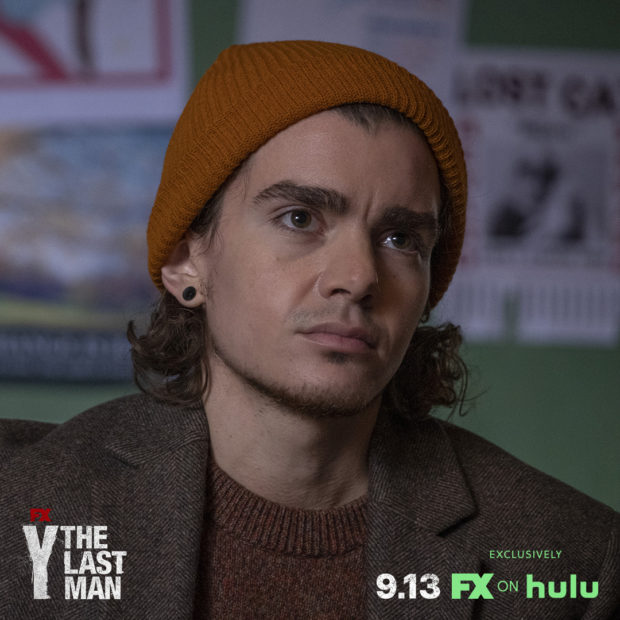
The inclusion of trans storylines in Y isn’t exploitative or a submission to the “woke” mob; it is a natural extension of themes already established in the comic. I’ve seen a lot of love for the show, especially from the LGBTQ community, but also a lot of toxic hatred from “fans” feeling betrayed by these inclusive topics that force Yorick to share the spotlight. Pay no mind to those mouth-breathing trolls—Vaughan and Guerra have both showered the series with praise. All forms of art and entertainment exist within the tides of progress, and Y surfs those waves with intelligence and class.
A Woman’s World
I imagine that most writers would’ve kept the story focused on Yorick, and why not? That’s the safe bet, a straightforward adaptation. But what Eliza and co. have done is take the concept of Y and expand it far beyond a white, cisgender man’s point of view. Yes, Yorick remains a major character, but he is just one part of a whole diverse world. Characters that fans know and love from the comic exist alongside original creations, elevating the entire experience. Throughout the first season, the narrative follows three separate but equally compelling storylines.
Y: The Last Man wouldn’t work without its core trio: Yorick, man-child and aspiring escape artist turned invaluable asset to humanity; the mysterious and deadly Agent 355; and Dr. Allison Mann, a genius geneticist with a reputation for pushing ethical boundaries. This dysfunctional family gets into all sorts of trouble as they travel across the country to retrieve Dr. Mann’s research and hopefully find a way to combat the plague. That story is still the spine of the show, even in its first season infancy, and each actor reminds fans why we fell in love with these characters.
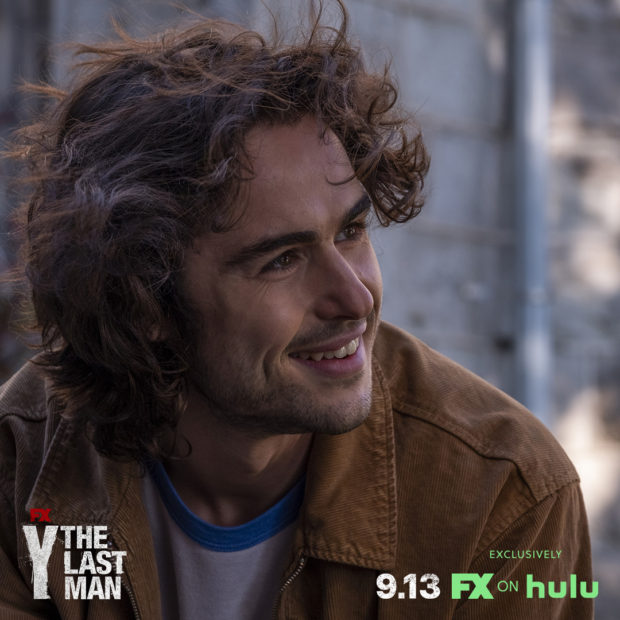 Ben Schnetzer’s Yorick is a bit older than the comic but retains all of his charm, privileged naiveté, and survivor’s guilt that made him instantly likable. Diana Bang’s Dr. Mann hooks you from the moment she appears on screen, balancing brilliance with the quirks and foibles of a woman who has put her science ahead of human connection. But Ashley Romans as 355…my stars, it is one of the great castings in recent memory. Though she is a card-carrying killer, Romans gives us glimpses into 355’s reserved vulnerability buried deep under the detachment and duty drilled into her.
Ben Schnetzer’s Yorick is a bit older than the comic but retains all of his charm, privileged naiveté, and survivor’s guilt that made him instantly likable. Diana Bang’s Dr. Mann hooks you from the moment she appears on screen, balancing brilliance with the quirks and foibles of a woman who has put her science ahead of human connection. But Ashley Romans as 355…my stars, it is one of the great castings in recent memory. Though she is a card-carrying killer, Romans gives us glimpses into 355’s reserved vulnerability buried deep under the detachment and duty drilled into her. 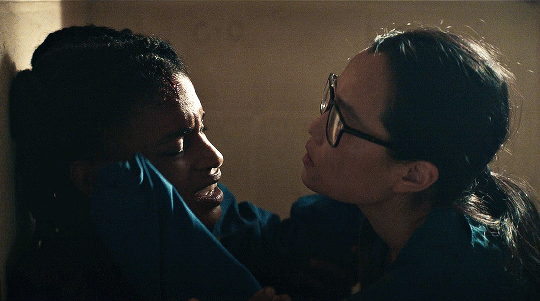
Each actor shines on their own, but when all three are together? Magic. Your heart will swell when Allison cuddles with 355 so she won’t sleep walk, or when Yorick breaks through 355’s shell with his sick dance moves—it’s them vs. the world, and I wouldn’t have it any other way.
Oh, and Ampersand? Here’s there in all of his mischievous, adorable glory.
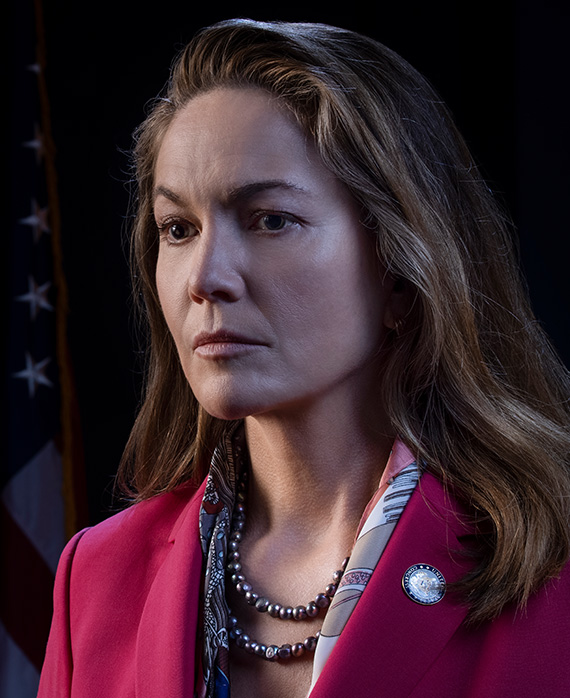 The second storyline follows Yorick’s mother, Jennifer (Diane Lane), assuming the role of president and operating from the Pentagon—a promotion from her role in the comic as Secretary of the Interior. But remnants of the previous administration remain. Former First Lady, Marla (Paris Jefferson), is still a powerful icon, despite being stuck in a cycle of mourning. Her daughter, Kimberly (Amber Tamblyn), actively opposes President Brown. This original character is a highlight of the series with Tamblyn delivering some of the best work of her career. Prior to the plague, Kimberly defined herself as a champion of traditional values and mother of boys, having even written a cringe-worthy book on the topic. Without her boys, she is unmoored and ignored. So when another cabinet member ahead of Jennifer in the line of succession is discovered alive, Kimberly makes it her mission to see order restored. Worse still, Regina (Jennifer Wigmore) is a dangerous radical who has no business being in power. The character would feel like a spoof if we didn’t have so many unfortunate real-world examples of these nutjobs (*cough*Marjorie Taylor Greene*cough*).
The second storyline follows Yorick’s mother, Jennifer (Diane Lane), assuming the role of president and operating from the Pentagon—a promotion from her role in the comic as Secretary of the Interior. But remnants of the previous administration remain. Former First Lady, Marla (Paris Jefferson), is still a powerful icon, despite being stuck in a cycle of mourning. Her daughter, Kimberly (Amber Tamblyn), actively opposes President Brown. This original character is a highlight of the series with Tamblyn delivering some of the best work of her career. Prior to the plague, Kimberly defined herself as a champion of traditional values and mother of boys, having even written a cringe-worthy book on the topic. Without her boys, she is unmoored and ignored. So when another cabinet member ahead of Jennifer in the line of succession is discovered alive, Kimberly makes it her mission to see order restored. Worse still, Regina (Jennifer Wigmore) is a dangerous radical who has no business being in power. The character would feel like a spoof if we didn’t have so many unfortunate real-world examples of these nutjobs (*cough*Marjorie Taylor Greene*cough*).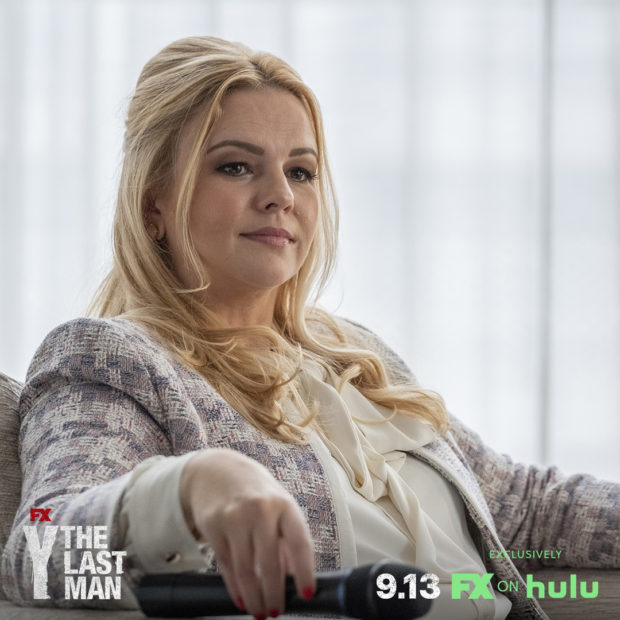
Regina isn’t the only threat to the fragile government. Yorick’s girlfriend, Beth (Juliana Canfield), has been radicalized by an insurgent group. Her history with Yorick and his family provides her unprecedented access to the Pentagon and President. This is a far cry from her role in the comics as Yorick’s lost love in Australia, a welcome change in my humble opinion.
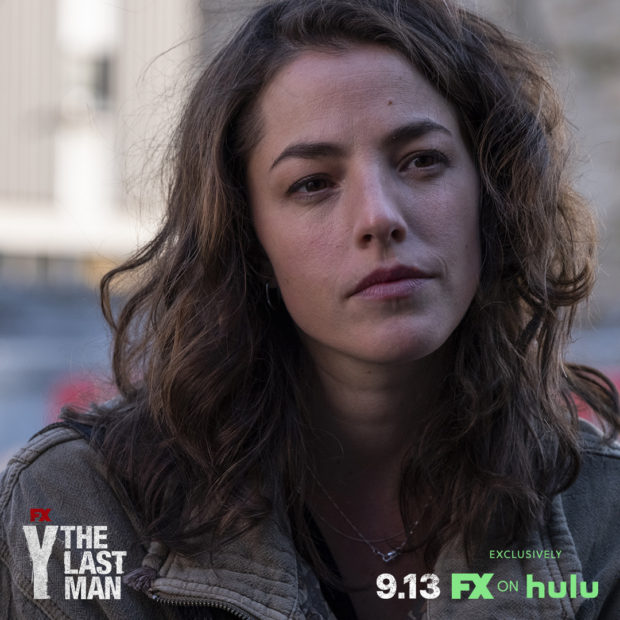 The story of Y wouldn’t be complete without Yorick’s sister, Hero (Olivia Thirlby). After surviving on the move with her best friend, Sam (Elliot Fletcher), she is indoctrinated into a group of women operating out of a department store. The group’s gruff leader, Roxanne (Missi Pyle) promises safety and sisterhood, but it is clearly a cult whose roots are in hating men. Roxanne is not above using violence and mental coercion to keep her flock in line. Hero can’t help but drink the Kool-Aid. The plague struck right after she accidentally killed a married man she was sleeping with. In a sense, it’s as if her crime never happened, and that guilt has been gutting her from within. But gaining the acceptance of Roxanne’s people comes with a cost—Sam. From his point of view, either these women accept that he is a man and hate him for it, or they tolerate him because they don’t really see him as a man. Either way, it’s a terrible situation.
The story of Y wouldn’t be complete without Yorick’s sister, Hero (Olivia Thirlby). After surviving on the move with her best friend, Sam (Elliot Fletcher), she is indoctrinated into a group of women operating out of a department store. The group’s gruff leader, Roxanne (Missi Pyle) promises safety and sisterhood, but it is clearly a cult whose roots are in hating men. Roxanne is not above using violence and mental coercion to keep her flock in line. Hero can’t help but drink the Kool-Aid. The plague struck right after she accidentally killed a married man she was sleeping with. In a sense, it’s as if her crime never happened, and that guilt has been gutting her from within. But gaining the acceptance of Roxanne’s people comes with a cost—Sam. From his point of view, either these women accept that he is a man and hate him for it, or they tolerate him because they don’t really see him as a man. Either way, it’s a terrible situation.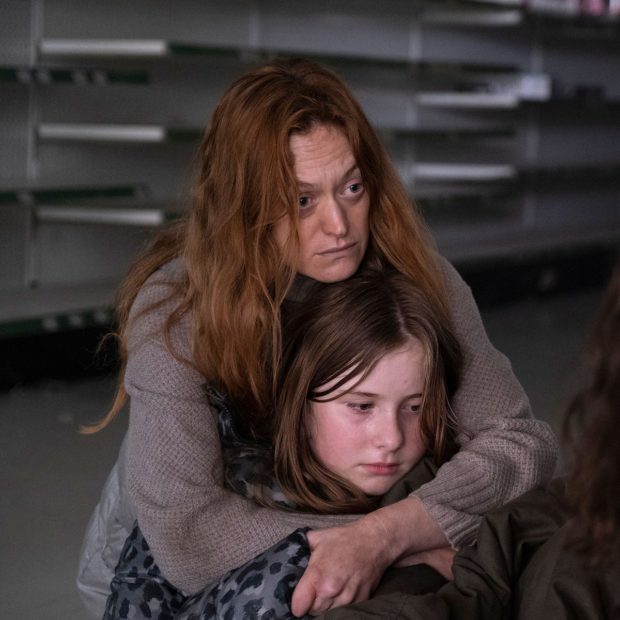
Finally, the cast is rounded out with Nora (Marin Ireland), press advisor to the previous administration who is cut off from the political scene. While trying to provide for her daughter, she also comes upon Roxanne’s group. Whip smart and forward-thinking, she sees great potential in the women…if not for the short-sighted, chaotic direction of Roxanne’s “leadership.” I don’t want to spoil the season’s big reveal, so let’s just say Nora has a much larger role that Yfans will be delighted to discover.
Mythology, character drama, politics, and survival: Y does a masterful job of balancing everything you’d want from the post-apocalyptic source material while also setting the groundwork for important, fresh stories that are just as engaging as Yorick’s journey.
Not Your Average Apocalypse
Some viewers wrote off Y without giving it a chance because they didn’t want to invest in another dreary, apocalyptic slog of depression and violence. I can assure you, this show is not The Walking Dead (and that’s not a zing at TWD). The imagery of when the plague hits is certainly harrowing, but what ensues never feels…malicious. I believe this is due to the intangibles brought by a plethora of talented women involved in every level of the production. The violence and despair associated with the thematic territory doesn’t feel devoid of hope, sensational, or shallow.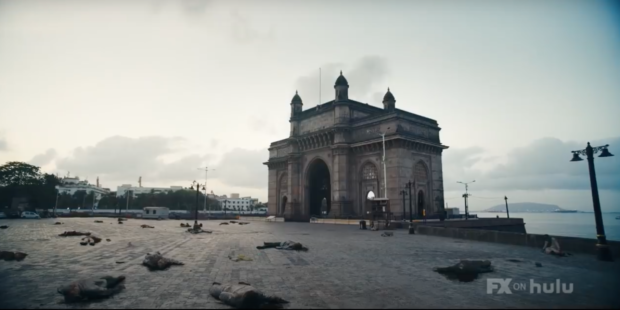 Familiar scenarios play out differently because the patriarchy has collapsed. Women are thrust into roles that are traditionally male dominated, from generals to chopper pilots to Secret Service. How they react to the daily challenges of keeping the country alive is part of the show’s genius. For example, a pair of pilots killed during Yorick’s secret departure from the Pentagon isn’t written off as collateral damage. They aren’t forgotten. Life matters in this story, and the taking of a life is not something to be trivialized. A tense assault on the Pentagon lacks the polished, almost mechanized tactical nature of similar sequences featuring men. One of the most telling moments is when an insurgent vomits after shooting someone in the head. She was playing the role of insurgent with all the necessary bluster, but the bloody reality of violence was something else entirely.
Familiar scenarios play out differently because the patriarchy has collapsed. Women are thrust into roles that are traditionally male dominated, from generals to chopper pilots to Secret Service. How they react to the daily challenges of keeping the country alive is part of the show’s genius. For example, a pair of pilots killed during Yorick’s secret departure from the Pentagon isn’t written off as collateral damage. They aren’t forgotten. Life matters in this story, and the taking of a life is not something to be trivialized. A tense assault on the Pentagon lacks the polished, almost mechanized tactical nature of similar sequences featuring men. One of the most telling moments is when an insurgent vomits after shooting someone in the head. She was playing the role of insurgent with all the necessary bluster, but the bloody reality of violence was something else entirely.
Similar moments of beautiful reality occur in the big finale shootout. It isn’t viewed through that adrenaline-pumping, badass lens you’d expect from a traditional action sequence. Instead, you see women crying in cover, abandoning their weapons, bleeding in utter disbelief. The cool factor is gone, leaving only the ugliness of a situation that didn’t have to gone down that way. And yet within that ugliness is such humanity, because every woman on screen feels like a real person instead of faceless goons getting mown down in a hail of bullets.
Yet for all the changes brought about in a world run by women, many actions and choices in Y are simply human—part of our nature, whether male or female. Jennifer lying about Yorick being alive to keep her son safe. Political deception and infighting. Distrust among groups of survivors. Greed. But even when struggling with the worst parts of human nature, Y strives to show us that it doesn’t have to be that way. The world has a second chance. Yorick may be key to saving the future of humanity, but every woman still alive is vital to its present.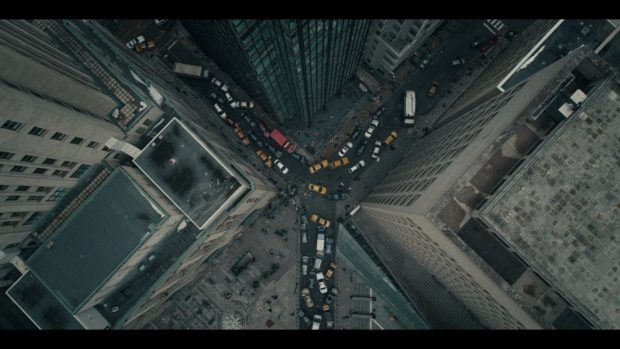 Y: The Last Man exceeded all of my expectations. It is diverse and inclusive without pandering, and proves that talent is genderless. I’m hoping that the series finds a new home, but if not, I’m immensely thankful for 10 episodes of top-tier television. The convoluted reasons for its cancellation were never about quality, so the fans need to be vocal about their love. Stream it like its going out of style. Tell your friends and family. Ignite the Twitterverse with your support.
Y: The Last Man exceeded all of my expectations. It is diverse and inclusive without pandering, and proves that talent is genderless. I’m hoping that the series finds a new home, but if not, I’m immensely thankful for 10 episodes of top-tier television. The convoluted reasons for its cancellation were never about quality, so the fans need to be vocal about their love. Stream it like its going out of style. Tell your friends and family. Ignite the Twitterverse with your support.
Together, we can ensure that #YLivesOn.

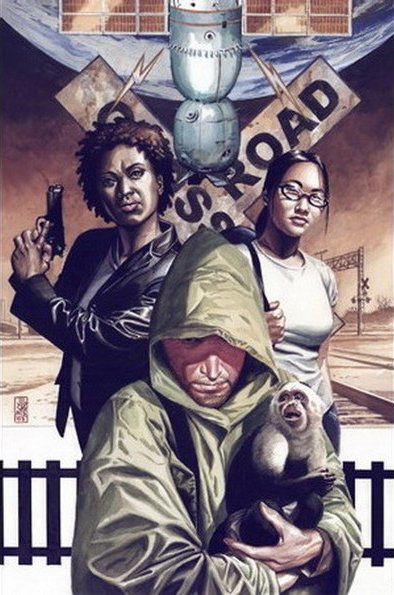
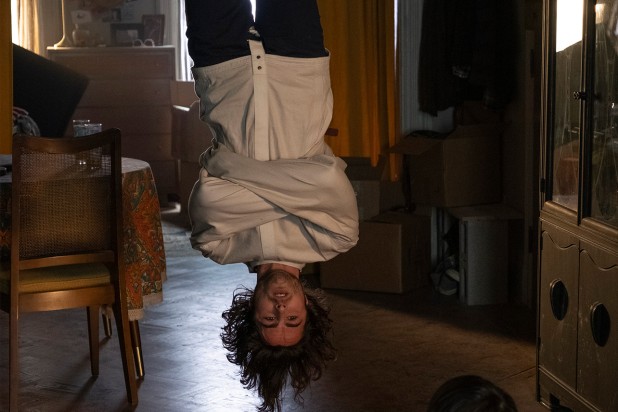
Sounds great! I’m in!
Geez, your a great writer!
While there is no question the sociocultural themes of Y: The Last Man are more relevant today than ever — life after the patriarchy — and I applaud the producers for incorporating trans characters/storylines and dealing responsibly with the sociopolitical complexities of a nonbinary world, I suspect the failure of the Y television show to catch on is owed to a recent sea change in the zeitgeist: By my appraisal, audiences are suffering from a serious case of dystopia fatigue at present. Fifteen years ago, it was still fun to imagine the end of the world as we know it, but given the existential threats right now to all the bedrocks of civilization — from the geopolitical rise of authoritarianism to the extreme-weather catastrophes exacerbated by the climate emergency to the ongoing global pandemic — I think we’re less apt to turn to post-apocalyptic fantasies for entertainment. We yearn for more hopeful visions right now — stories that show us a way out of the intractable crises that have come to define the 21st century.
Without commenting on the merits of the show itself, which I have not seen (though I read the entire Vertigo series), I suspect Y was the victim of bad timing; its message is just out of step with a culture starved for kindness and optimism, hence the success of recent series such as The Orville, The Good Place, and Ted Lasso. They spent so many years trying to get Y up on the screen that by the time the chance to do so finally arrived, no one asked if there was still an audience for it. I’m betting we’re going to see fewer “dark and edgy” shows over the next decade; they won’t go away entirely, mind you, but I don’t think they’re going to saturate the marketplace the way they have since the immediate aftermath of 9/11, when every franchise — from Bond to Batman to Battlestar Galactica — strategically ditched it sense of joy and/or wonder. And that’s okay by me.